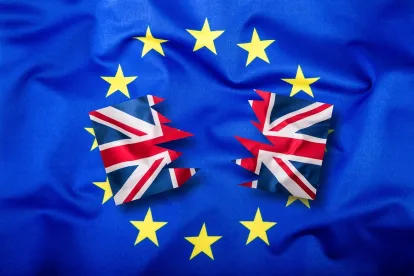Brexit takes us to Geneva
Some say that Brexit negotiations with third countries have not yet started. They are forgetting an important prerequisite. For the UK to control and negotiate its own commercial policy independently, the journey could only start in Geneva. Here is why …
Proposed Trading Quotas Allocation Method Leave a Sour Taste for Third Countries Exporters

At the moment, Brussels negotiates all tariffs and quotas for imported goods on behalf of the 28 EU Member States in accordance with Article II of the GATT. Tariff bindings and quotas are recorded in the EU Schedules of Concessions on goods, which are annexed to the GATT 1994 and are considered an integral part of WTO commitments of the EU, and its 28 Member States.
Last year, the UK Ambassador and Permanent Representative to WTO, Julian Braithwaite, indicated in a blog that the transposition of EU Schedules into UK Schedules would be a relatively straightforward process for most tariffs of goods or arrangements in services. Ultimately, those commitments will be integrated as part of the EU Withdrawal Bill to have force of law in the UK after Brexit. He admitted however that some areas would raise issues. Amongst them, the now-oh so famous Agricultural Tariffs-Rate Quotas (TRQs), under which countries can import certain goods with reduced duties, but up to a maximum limit. TRQs are important because they usually apply to goods that are sensitive (think agriculture and food). As such the post-Brexit allocation of those TRQs is being watched by WTO members, especially large exporters of agricultural and food to the EU.
A significant step was reached this week as the EU and UK delegation formalised an official position defining how they will divide the TRQs between them. This is a welcomed development, in a long journey towards the building of the UK trade policy post-Brexit. Here is what is on the table.
The Proposal – what is on the table?
In a letter issued 11 October 2017, Britain and the EU have agreed to “maintain the existing levels of market access available to other WTO members” and to define the EU and the UK quantitative commitments “through an apportionment of the EU’s existing commitments, based on trade flows under each tariff-rate quota”. The basic idea behind it is to reduce the EU’s quotas, with Britain taking over the vacated share; the argument being that the rest of the world will be “no worse off” after Brexit. It is argued that the portion of the EU’s quotas that the UK would take is based on the UK’s average consumption over the last three years. In addition, they will also be apportioned the level of agricultural subsidies agreed. In other words, it is all about data and calculation. Their legal basis? A 1980 decision on Procedures for Modification and Rectification of Schedules of Tariff Concession offering basis for WTO members to modify or change their commitments provided that it is certified by the Director-General. This rectification decision offers the crucial advantage to avoid going through the formal modification procedure based on Article XXVIII GATT 1994, which involves formal negotiations between WTO members.
Is it this simple?
Seemingly less than impressed with the proposed arrangement, a sternly worded letter of complaint from the big seven food exporters, the U.S., Canada, New Zealand, Brazil, Thailand, Argentina and Uruguay, found its way to UK and EU representatives on 26 September. It stated, in no uncertain terms, that they “cannot accept such an agreement”.
More precisely, on the allocation method, the delegations specified that to split TRQs based on historical averages “would not be consistent with the principle of leaving other WTO members no worse off, nor fully honour the existing TRQ access commitments”. Indeed, two fixed quotas (one for the EU and one for the UK) could make markets more difficult to sell to than one large quota. Essentially, they claim that the current market setup is more flexible, allowing exporters to sell to more product to areas of the market where demand is greater.
As ever the difficulty in those talks lies in the uncertainty surrounding the economic consequences of Brexit. Under the proposed EU/UK agreement, any post-Brexit UK economic decline could severely affect the demand for agriculture exports. If true, splitting of quotas would risk reducing the available market for exporters where a decline occurs. On this point, the data and methodology used to define trade flows under each TRQs will therefore be crucial.
However, perhaps more importantly, it is the legal basis that is at stake here. In considering that the process is technical rectification only, the EU and the UK want to avoid going through a formal negotiation process. But, there are some conditions attached to the process: changes shall be of a purely formal character and they shall not alter the scope of a concession. A certification will only be granted if no objections are raised by other contracting parties. If WTO members disagree with the outcome of the informal negotiations taking place, it is likely that they will consider objecting. For this reason, the actual TRQs allocation method could well end up being interpreted in WTO dispute settlement proceedings.
What happens next?

The complaint should be seen as a stark reminder that Brexit is not an EU-only divorce. In their response to the complaints, the UK and the EU reasserted their willingness to “engage actively with WTO members”. However, by insisting that they expected a particularly “high degree of transparency through the sharing of relevant information and data”, the seven responding nations suggested that this has not been the case so far. Although perhaps not raising the alarm at this stage, they were making their point, and voice heard.
As such, it seems as though this matter could rumble on for some time before being resolved. Keep calm and carry on.



 />i
/>i

